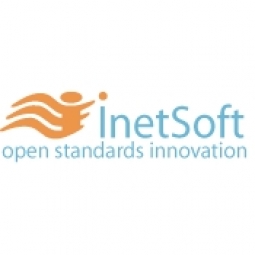Customer Company Size
Large Corporate
Region
- America
Country
- United States
Product
- eScholar VISTA Reporting
- InetSoft Style Intelligence
Tech Stack
- Java
- Web-based software
Implementation Scale
- Enterprise-wide Deployment
Impact Metrics
- Productivity Improvements
- Digital Expertise
Technology Category
- Application Infrastructure & Middleware - Data Exchange & Integration
Applicable Industries
- Education
Applicable Functions
- Business Operation
Services
- System Integration
About The Customer
eScholar, driven to improving education by providing educators with the most effective data management tools possible, is dedicated to delivering a common platform of integrated data that supports the best possible analytical capabilities in support of improving children's education. Initiatives such as “No Child Left Behind” have significant reporting requirements. Large amounts of raw data are collected about students, teachers, and performance. Simply collecting and storing the data though, does not make it useful. Without a structure for matching one element to another, this new sea of data would lie unused and opportunities for productive change could be lost.
The Challenge
eScholar provides solutions for collecting, cleansing, identifying, analyzing and reporting on the data that educators need for tracking and improving the performance of the complex enterprise of educating children. All of the data elements in eScholar systems are maintained at the finest, or lowest, level of detail and can be stored for an unlimited period of longitudinal history within any of the categories or domains of data. eScholar must integrate all of these data regardless of source. Therefore every fact collected by a school district that relates to an individual student’s performance remains tied to that individual. eScholar had several mandatory requirements for their reporting solution. First and foremost, it needed to offer an easy-to-use self-service environment that enabled their users who had a wide variety to technical skill levels, to access and report on their information. Secondly, it needed to be a low maintenance solution that integrated seamlessly with a wide variety of IT infrastructures and didn’t impact school districts with application downloads, plug-ins, or upgrades. It needed flexible, easily administered security, and had to be as affordable for schools with a couple of users, as well as districts with tens of thousands of users in widely distributed information system environments. eScholar selected InetSoft after evaluating many vendor solutions, as well as the open source products available today.
The Solution
eScholar now uses InetSoft’s Style Intelligence™ BI technology. InetSoft’s 100% Java, web-based software had the user-friendly interface and role-based security needed for eScholar’s customers, which includes school board executives, school administrators and faculty members. eScholar chose InetSoft Style Intelligence as their preferred reporting solution for eScholar VISTA Reporting™ products. The easy-to-use software was a perfect fit for eScholar customers, as its click & select, drag & drop, user interface is extremely intuitive for their wide variety of users. Because it is web-based and zero-client, upgrades are seamless with no impact or incompatibility issues with their user communities. The software’s flexible Java platform allows eScholar to easily integrate InetSoft’s role-based security with each customer’s individual security infrastructure. The role-based security allows system administrators to easily control access to shared, public, and private information and reports. Finally, InetSoft offered a wide range of licensing options that made the product easily affordable to all size customers.
Operational Impact

Case Study missing?
Start adding your own!
Register with your work email and create a new case study profile for your business.
Related Case Studies.

Case Study
Revolutionizing Medical Training in India: GSL Smart Lab and the LAP Mentor
The GSL SMART Lab, a collective effort of the GSL College of Medicine and the GSL College of Nursing and Health Science, was facing a challenge in providing superior training to healthcare professionals. As clinical medicine was becoming more focused on patient safety and quality of care, the need for medical simulation to bridge the educational gap between the classroom and the clinical environment was becoming increasingly apparent. Dr. Sandeep Ganni, the director of the GSL SMART Lab, envisioned a world-class surgical and medical training center where physicians and healthcare professionals could learn skills through simulation training. He was looking for different simulators for different specialties to provide both basic and advanced simulation training. For laparoscopic surgery, he was interested in a high fidelity simulator that could provide basic surgical and suturing skills training for international accreditation as well as specific hands-on training in complex laparoscopic procedures for practicing physicians in India.

Case Study
IoT platform Enables Safety Solutions for U.S. School Districts
Designed to alert drivers when schoolchildren are present, especially in low-visibility conditions, school-zone flasher signals are typically updated manually at each school. The switching is based on the school calendar and manually changed when an unexpected early dismissal occurs, as in the case of a weather-event altering the normal schedule. The process to reprogram the flashers requires a significant effort by school district personnel to implement due to the large number of warning flashers installed across an entire school district.

Case Study
Implementing Robotic Surgery Training Simulator for Enhanced Surgical Proficiency
Fundacio Puigvert, a leading European medical center specializing in Urology, Nephrology, and Andrology, faced a significant challenge in training its surgical residents. The institution recognized the need for a more standardized and comprehensive training curriculum, particularly in the area of robotic surgery. The challenge was underscored by two independent studies showing that less than 5% of residents in Italian and German residency programs could perform major or complex procedures by the end of their residency. The institution sought to establish a virtual reality simulation lab that would include endourological, laparoscopic, and robotic platforms. However, they needed a simulator that could replicate both the hardware and software of the robotic Da Vinci console used in the operating room, without being connected to the actual physical console. They also required a system that could provide both basic and advanced simulation training, and a metrics system to assess the proficiency of the trainees before they performed surgical procedures in the operating theater.

Case Study
Edinburgh Napier University streamlines long-distance learning with Cisco WebEX
• Geographically dispersed campus made in-person meetings costly and inconvenient.• Distance-learning programs in Malaysia, India, and China required dependable, user-friendly online tools to maximize interaction in collaborative workspaces.• Virtual learning environment required a separate sign-in process, resulting in a significant administrative burden for IT staff and limited adoption of collaboration technology.

Case Study
8x increased productivity with VKS
Before VKS, a teacher would spend a lot of time showing a group of 22 students how to build a set of stairs within a semester of 120 hours. Along with not leaving the teacher much time to provide one-on-one support for each student to properly learn carpentry, it also left a considerable amount of room for error. Key information would be misinterpreted or lost as the class was taught in the typical show-and-tell way.

Case Study
Scalable IoT Empowering GreenFlex's Sustainable Growth
GreenFlex, a company that supports sustainable development, decarbonization, and energy efficiency, faced several challenges in its quest to expand its business. The company needed to deploy a robust and sustainable IoT technology to support its growth. It was crucial for them to monitor and control devices at customer sites in a safe and reliable manner. They also needed to integrate devices across a range of communication protocols and gather and act on data to meet efficiency targets. GreenFlex had previously built IoT capabilities into its digital platform, GreenFlexIQ, to monitor and manage customer sites remotely. However, they soon realized that they needed a new platform to support their ambitions. They needed a platform that could scale to connect more devices for production management and make it easier for the operations team to manage devices in the field.







